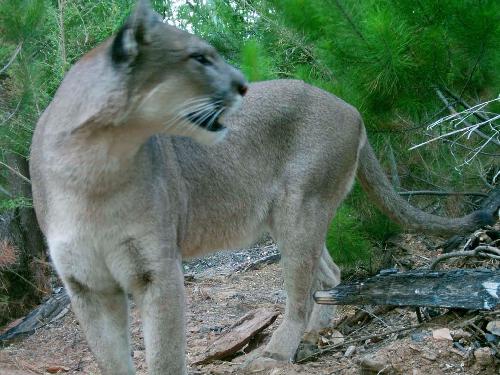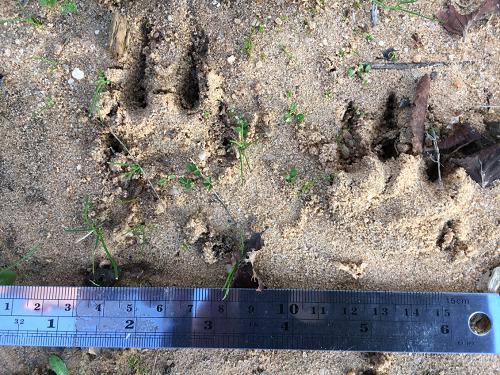Christian Thomaz Osorio Popiolek
This project aims to perform long-term wild felid research in Central Chile, generating valuable knowledge about this group in this ecoregion (where they remain almost unknown), providing insights for the conservation and science-based management of these species. The study area is located within the Chilean Winter Rainfall and Valdivian Forests Biodiversity Hotspot, comprising many threatened habitats (e.g.: Mediterranean Andean deciduous Nothofagus obliqua and Austrocedrus chilensis forest). Both areas are of conservation importance and likely represent a refuge for central Andean carnivores. We will apply a highly interdisciplinary approach comprising camera-trapping, diet analysis and direct management to estimate puma population density, mitigate the human-wildlife conflict– thus reducing retaliatory killing against pumas– and propose scienc-based management to authorities and landowners. Additionally, we will explore interactions between the puma and other carnivores: culpeo fox (Lycalopex culpaeus) and small wild felids like the kod-kod (Leopardus guigna), key to the functionality of ecosystems.

Puma (Puma concolor) recorded during our pilot study in a pine-trees plantation. ©Christian Thomaz Osorio Popiolek.
The puma (Puma concolor) is the largest mammalian carnivore and the top predator inhabiting Chile. Even pumas’ worldwide conservation status is Least Concern (LC), according to IUCN Red List and, they are classified as Near Threatened (NT) according to the Chilean Conservation Status Classification. Its major threats, locally and worldwide, are habitat loss and fragmentation, poaching of their wild prey, and retaliatory hunting due to actual, or perceived, livestock predation. Fragmentation and habitat loss affect resource availability (i.e. feeding resources, refuges, and territory placement), stressing local puma populations even more.

Pudu (Pudu puda, the smallest American cervid) tracks. ©Christian Thomaz Osorio Popiolek.
Most puma (Puma concolor) research has been conducted in North America and existing studies in South America primarily describe feeding ecology. Pumas in Chile, which are threatened by habitat fragmentation and human-wildlife conflict throughout the country, remain particularly understudied with the exception of southernmost areas.
Habitat loss is especially relevant after the 2014 and 2017 wildfires, which were likely the largest wildfires in Chilean history, transforming the landscape extensively. Thus, it is important to assess how carnivores use the landscape in this new scenario, given the unburnt study area is likely a refuge for pumas and may exacerbate puma-livestock conflict, which is increasing in the study area.
This project aims to perform long-term wild felid research in Central Chile, generating valuable knowledge about this group in this ecoregion and providing insights for the conservation and science-based management of these species. The study area is located within the Chilean Winter Rainfall and Valdivian Forests Biodiversity Hotspot, comprises nearly 75,000 km2 with many threatened habitats (e.g.: Mediterranean Andean deciduous Nothofagus obliqua and Austrocedrus chilensis forest). Both areas are of conservation importance and may represent a refuge for wild carnivores. We will apply an interdisciplinary approach comprising camera-trapping, diet analysis and non-invasive genetic sampling (e.g., fecal DNA) to assess population density, habitat use, connectivity, and resource selection for pumas and other felids in central Chile, providing valuable insights for the management: science-based livestock-carnivore conflict mitigation strategies will be developed and implemented, and habitat management strategies will be designed in cooperation with the land-owners and wildlife and forestry authorities.
Additionally, the project aims to study species interactions between the puma and other carnivores in this ecoregion. Specifically, we are interested in the interactions between pumas and mesocarnivores i.e.: culpeo fox (Lycalopex culpaeus); small wild felids such as the pampas-cat (Leopardus colocolo) and kod-kod (Leopardus guigna), which are highly relevant for the functionality of ecosystems.